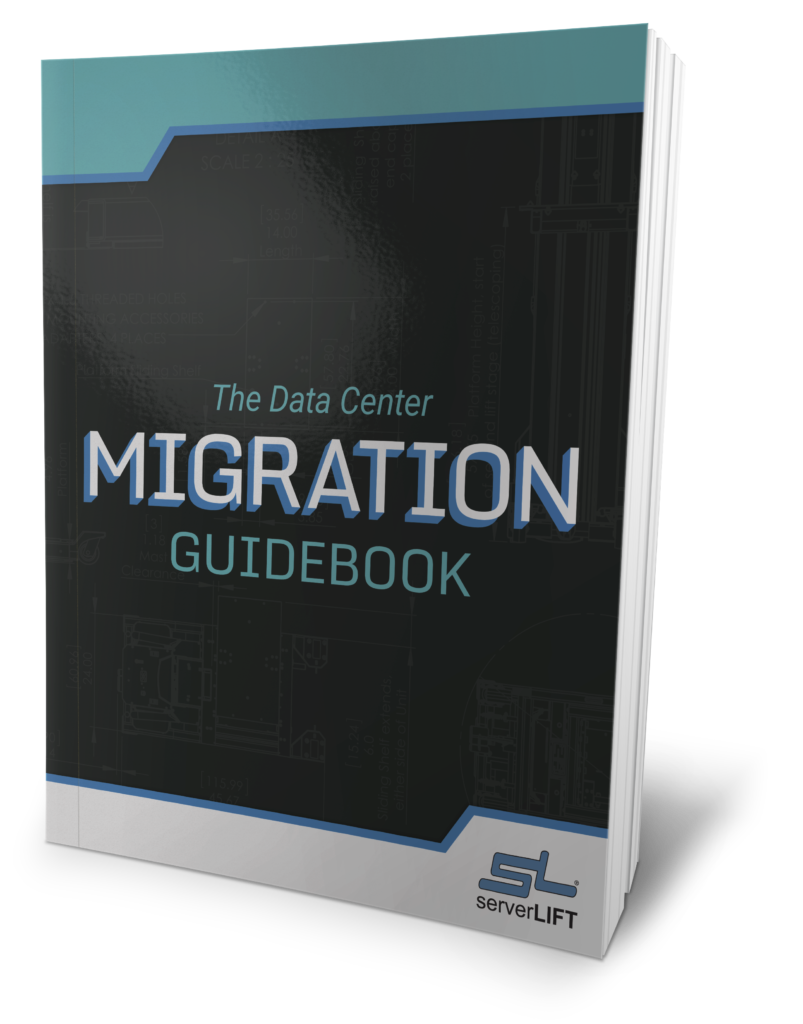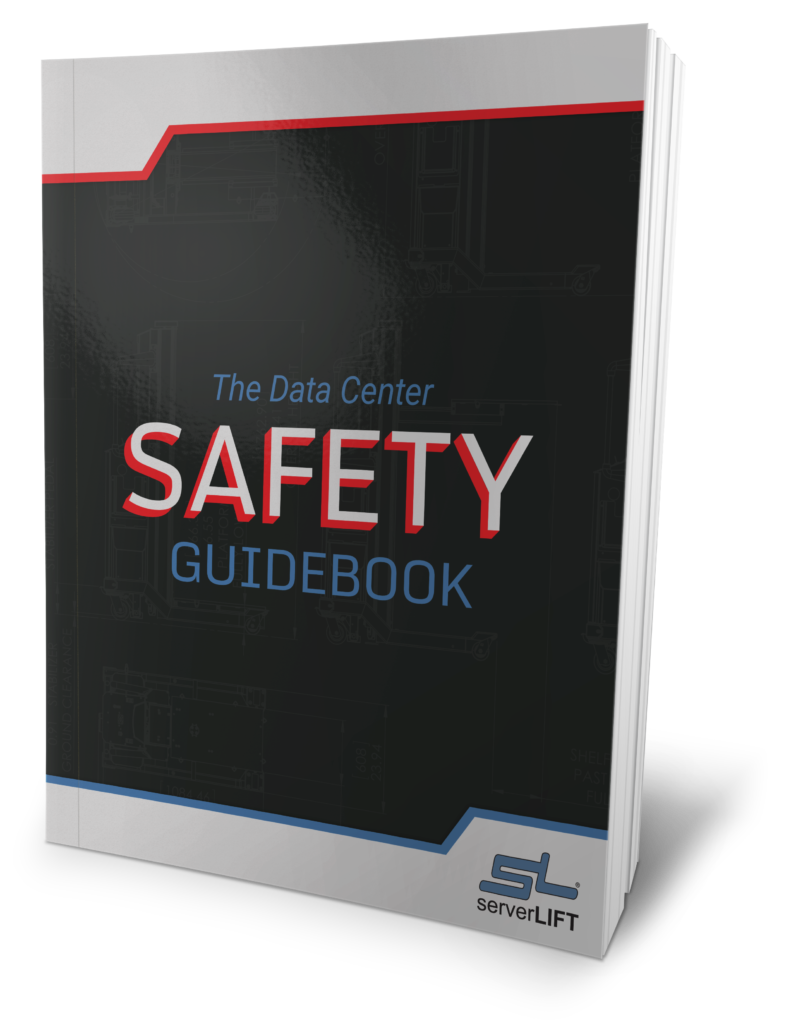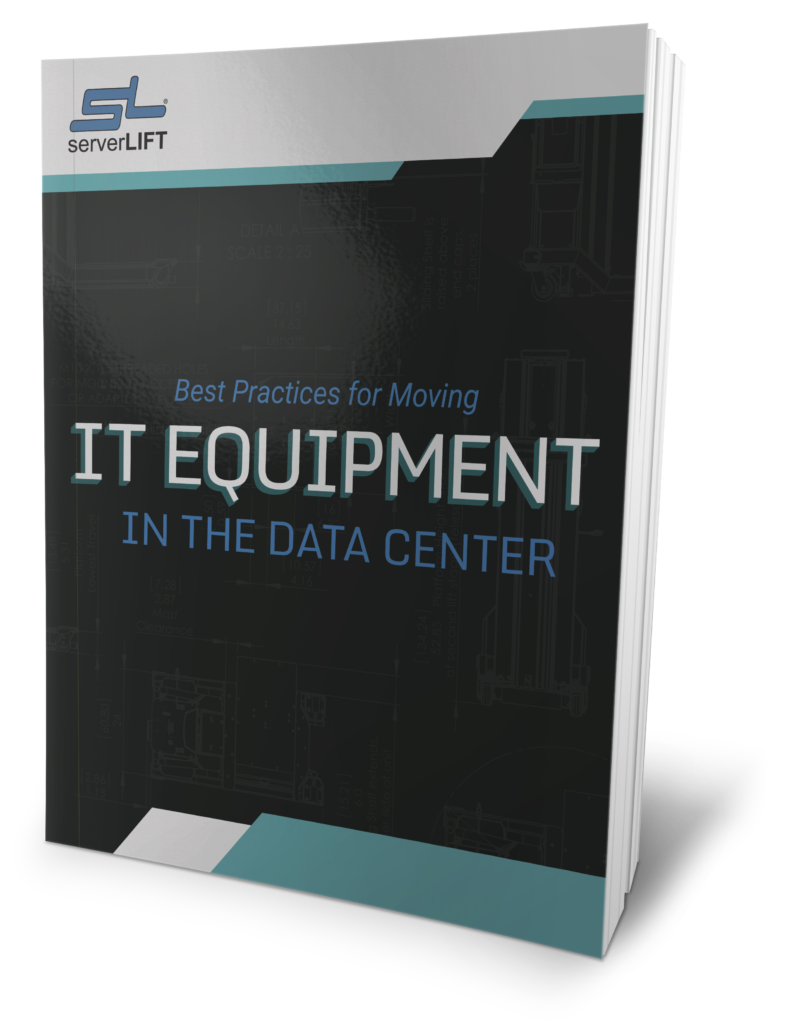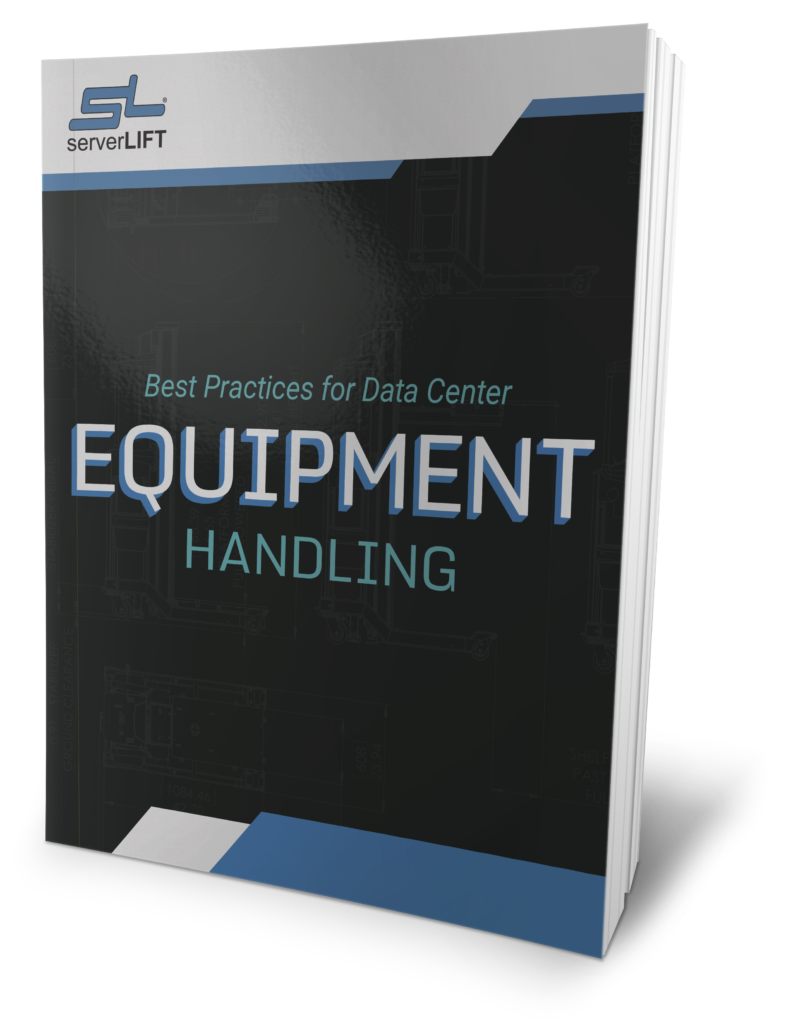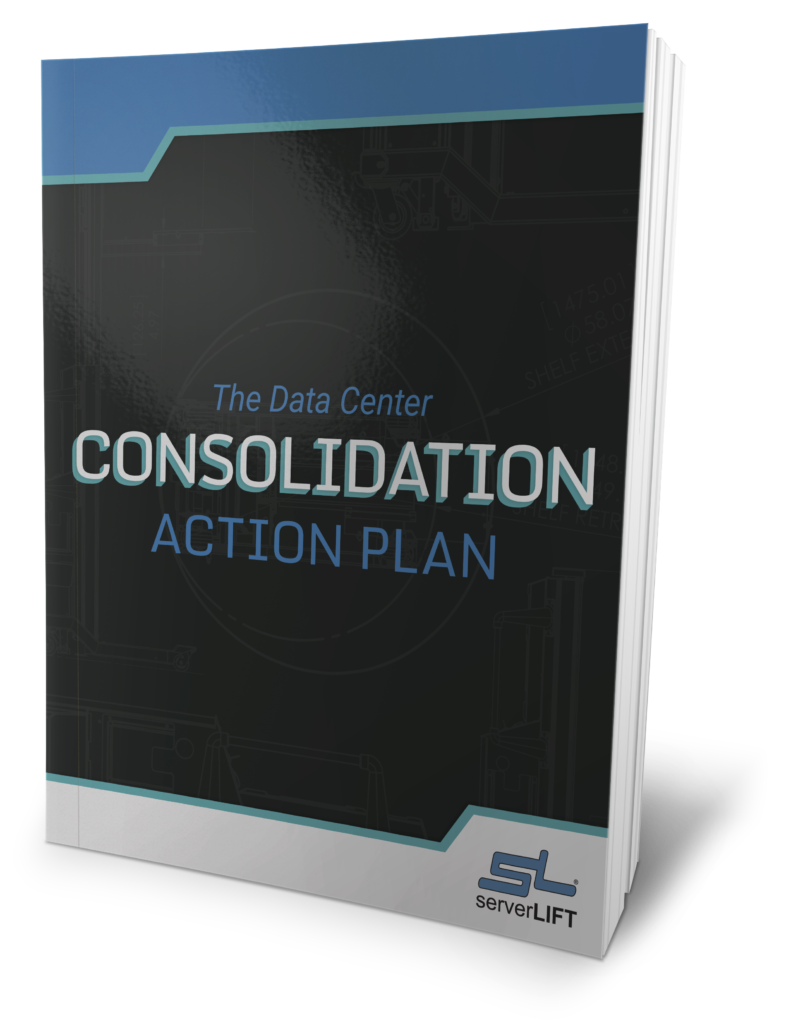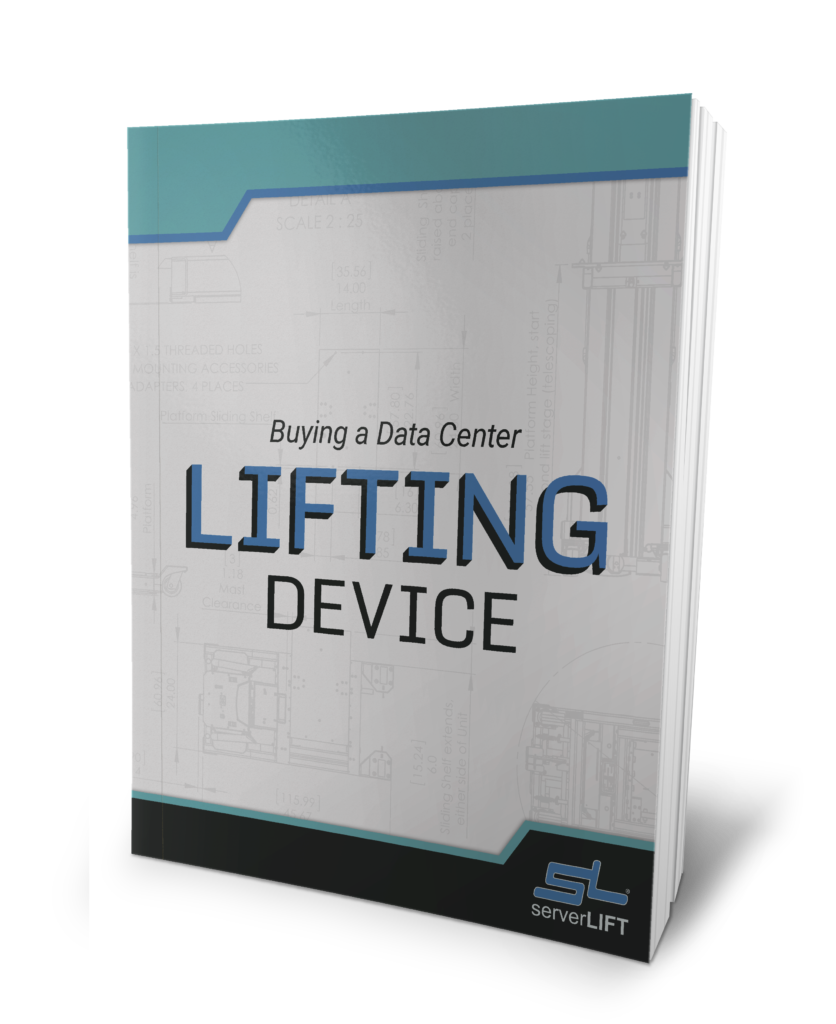When evaluating the cost of a new data center purchase, price is often an outsized factor. Items that you know are essential and needed, even safety-related, might seem too expensive to some decision makers, especially if operational funds are already allocated. However, the investment in things such as a safety-certified data center lift often pays for itself in a relatively short period of time.
Let’s break down the connection between data center lift cost versus return on investment and look at reasons for purchasing dedicated server-handling devices. It always comes down to the numbers; with enough time and enough averted accidents, the ROI of a data center lift will be higher than the initial investment cost.
1. Server-handling lifts keep people safe.
Data center worker safety should be of paramount importance, so it is first on our list.
Keeping workers safe must be a top priority for data centers, primarily because it’s the right thing to do, but also because worker injuries can lead to other unexpected costs. Injured employees mean an unexpected labor shortage. Other employees would have to cover, resulting in more overtime pay. Additionally, a single injury might cost a data center a lot of money for Worker’s Compensation claims and could potentially create a significant financial loss if the injured employee files and wins a lawsuit for a personal injury claim.
It’s easy to keep workers safe by ensuring that they have the proper equipment for lifting heavy IT equipment. When data center workers carry heavy IT equipment or use non-data center lifts to move equipment, an expensive accident is just waiting to happen.
Data center managers may never know exactly how much money they’ve saved by avoiding workplace accidents. But it only takes one incident to figure out how much an injury costs and to turn a valued employee’s life upside down.
Customers with a ServerLIFT data center lift report a 100-percent accident-free record.
2. Lifting IT equipment with the proper device will protect it.
Data center accidents are not only dangerous for employees. They can also cause thousands of dollars of avoidable damage to IT equipment. Particularly bad accidents might even cause a domino effect where one rack crashes into another, and perhaps another.
3. Fewer employees are needed to install equipment
Without a server-handling device, two or more employees are needed to lift, transport, and install most IT equipment. It may take three or four people to rack or depopulate a single switch or loaded blade-server chassis, and rearranging multiple pieces of IT equipment would require a sizable team.
A tech at a colocation facility once lamented to us that he always has to wait until the end of his overnight shift (when he’s on the site alone) to perform any critical server swaps or installs, when the day shift comes to work and can assist him.
Even when multiple techs are onsite, a team of workers is taken away from other critical functions to move IT equipment manually and keep operations running smoothly.
Purchasing a safety-certified and purpose-built server-handling device solves this problem. With the right IT equipment lift, one employee can easily and safely remove, transport, and install equipment. This frees up everyone else on the team to continue working on their tasks, even if they remain on standby for help if needed.
4. Installing equipment takes less time.
Using a data center lift improves the efficiency of server installations significantly compared to manual alternatives. One employee is needed to install IT equipment and installation takes less time than it would for a full team to install the equipment manually.
Combine these two factors together—fewer employees and less time needed for installations—and the average data center will save quite a bit of money, depending on how many equipment moves and installations the facility completes.
How to Choose the Right Data Center Lift
Once the decision is made to purchase a server-handling device, it’s important to choose the right piece of equipment to suit the situation.
A few key factors matter, so it’s wise to look for data center lifts that:
- Are purpose-built for handling servers and other data center equipment. General-purpose material lifts aren’t designed specifically for use in data centers and won’t provide the same level of function, safety, efficiency, and cost-effectiveness that a purpose-built data center lift will. We’ve heard of many situations where someone believes that a Genie® Lift™ GL™-series or similar brand material lift will suffice. Even on their website, at most they only claim that these devices are capable of transporting server equipment, not safely installing or removing them from racks and cabinets. Below are the promotional pictures used for this type of equipment. They’re “well suited for shipping/receiving, lifting heavy material to or from shelves, installing and repairing HVAC components, lifting and moving automotive parts . . . .”
- Incorporate extensive safety mechanisms. The safety and wellbeing of employees is paramount, yet not all data center lifts address safety concerns equally. Research safety features and ensure that they will adequately protect employees in all situations they will be exposed to.
- Can extend high and low enough to perform installations on the very tops and bottoms of racks. Some data center lifts operate within a height range that doesn’t reach to the floor or to the tops of racks. Choose a lift that fits the rack height employees will be working with. Currently, only ServerLIFT® makes stock, safety-certified, data center lift models that can reach all standard-height racks.
- Will not cause electrical interference to surrounding equipment. Many lifts that were not designed to be used in data centers can cause radio frequency interference (RFI) when they are operated near sensitive IT equipment. A purpose-built data center lift will not generate strong magnetic fields that could disrupt nearby electronics. Certifications to look for are CE (Europe), FCC (USA), IC (Canada), KCC (Korea), and more.
- Are rated to hold the loads they will need to carry. If a lift is rated to 200 pounds but a data center’s heaviest equipment weighs 400 pounds, that lift is not the best choice. When in doubt, weigh the equipment that most likely exceeds the weight limit of lifts and eliminate candidates based on those needs.
- Allow for fine adjustments. If a lift can’t achieve precise, fine-tuned adjustments, it will be difficult to align equipment with rack slots for installation. Employees may still have to use physical strength or put their hands in dangerous positions to finesse the equipment into place. Instead, choose a server-lifting device that adjusts precisely to hold equipment exactly where it is needed.
- Independently stable, rigid, and can secure the payload. Lifting IT equipment up and lowering it back down aren’t the only vital functions a data center lift will need to perform. It should not move when the server is loaded on or off of it, and remain stable and rigid without needing to be secured to your infrastructure. Such a lift also needs to be able to transport equipment securely even across rough floors, raised doorways, and sloped surfaces, and allow you to tie the equipment down to the lift to keep it safe on the journey.
- Front vs side loading and unloading. Many data centers lower costs by using super-thin rows of racks to achieve a high density of servers. Often, employees must navigate these narrow spaces and still have enough space to access racks for an installation or removal. A data center lift should be able to accommodate loading and unloading on both sides of the aisle without needing to turn around. That’s where side loading provides a major advantage. Front loading may be ideal when there’s ample space in front of a rack, as long as the lift maintains its fine maneuverability in tight spaces as needed.
Tired of shopping around?
ServerLIFT® offers data center lifts that fulfill all of these requirements and more. Our purpose-built server-handling devices are designed and manufactured with all of a data center’s unique needs in mind. We offer several models for a range of situations, and our Customer Success experts are always standing by to help you find the ideal solution.
Contáctenos to learn more about ServerLIFT® data center server-handling solutions.






